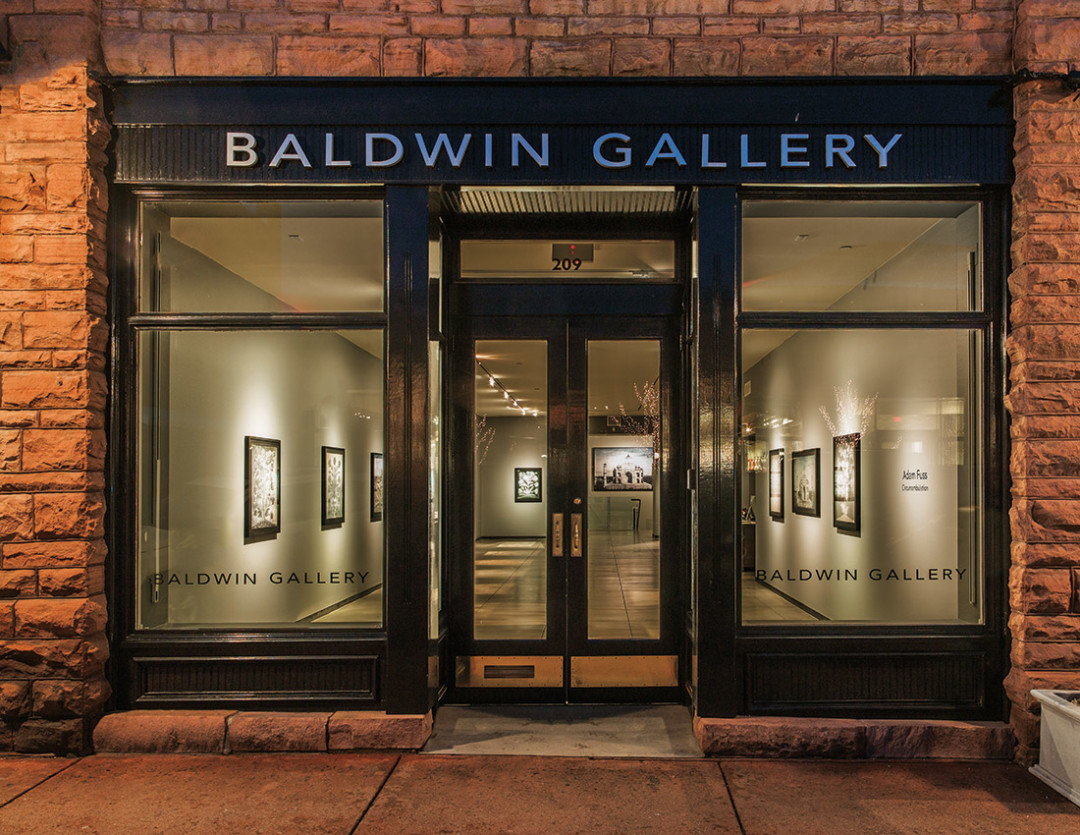Still Contemporary

Image: Robert Millman
Sinking into a deep upholstered chair in the lower level of the Baldwin Gallery, Richard Edwards tosses his head back with an easy, hearty laugh that softens his London-bred, Cambridge-educated reserve. He seems very much at home, not only in the gallery he founded with his life partner, Harley Baldwin, as it enters its twentieth season, but also in Aspen, which is riding the wave of an elevated profile in the contemporary art world.
That certainly wasn’t the case in the winter of 1994–95, when the Baldwin Gallery opened on the Collins Block in a small, stripped-down space where Fendi peddles purses today. While Aspen had hosted a few serious contemporary artists-in-residence in the 1960s, by the mid-1990s only the Tavelli Gallery and the David Floria Gallery focused on selling contemporary work. Baldwin brought bigger money and bigger names to the table.
“When we first opened, we honestly had no idea if it would work or not. Harley just wanted to promote contemporary art in Aspen and thought we’d have some fun doing it,” Edwards says today. “Worse came to worse, we’d end up with a collection that cost a lot of money to build.”
That’s not to say Baldwin hadn’t seen the writing on the wall. Often credited—or blamed, depending on one’s perspective—for Aspen’s shift from gritty to glitterati, he opened the door to luxury brands by turning an entire historical block in downtown Aspen into a mini-Rodeo Drive. (Baldwin purchased the Brand Building in 1971 and the Collins Block in 1988.)
“We had a world-class music festival, a world-class ballet, and the Aspen Institute,” Edwards says. “Harley knew people had sophisticated tastes in Aspen. He liked to measure us against what people were doing in New York or L.A., and that was a novel way of thinking at the time. He anticipated what was coming.”
The pair’s timing for the gallery was ideal: its opening coincided with the early ’90s recession that hit the art world. Baldwin found a steady crop of artists willing to take a chance and exhibit in Aspen. After a series of successful shows, including Jennifer Bartlett, Donald Baechler, and Eric Fischl, word was out, and the gallery was ready to move into its current location in the Brand Building, where a basement was built to create a more conventional exhibit space. The 8,000-square-foot space opened Presidents’ Day Weekend of 1998.
Since then, Baldwin Gallery has established a loyal international clientele. Its exhibitions have featured works by world-renowned artists like Robert Mapplethorpe, James Rosenquist, James Turrell, Jim Hodges, and Tom Sachs. Today it shows roughly ten artists each year. The gallery recently made international art magazine Modern Painters’ list of the “Top 500 Galleries in the World,” the only gallery in Colorado to be included and the only American gallery in a city with a population of less than 100,000.
Harley Baldwin died in 2005 at age fifty-nine from cancer, and Edwards has carried forth the vision the two shared from the beginning: to create a reputable gallery for serious contemporary art. “I do try to run the business in terms of what Harley would have done,” Edwards says. “He was a great mentor to me. He was a presence, a force of nature.”
Moving forward, Edwards seems ready to come out from behind Baldwin’s shadow. He’s created an overall program that is decidedly more conceptual and complex than the commercially viable art Baldwin favored. Surviving a life partner isn’t easy, but carrying on his legacy with the gallery is like coming home. “Aspen is the most extraordinary town in America,” Edwards says, a bit wistfully. “It was a wonderful, magical place when I came here, and it still is—a place where my heart lifts.”













































